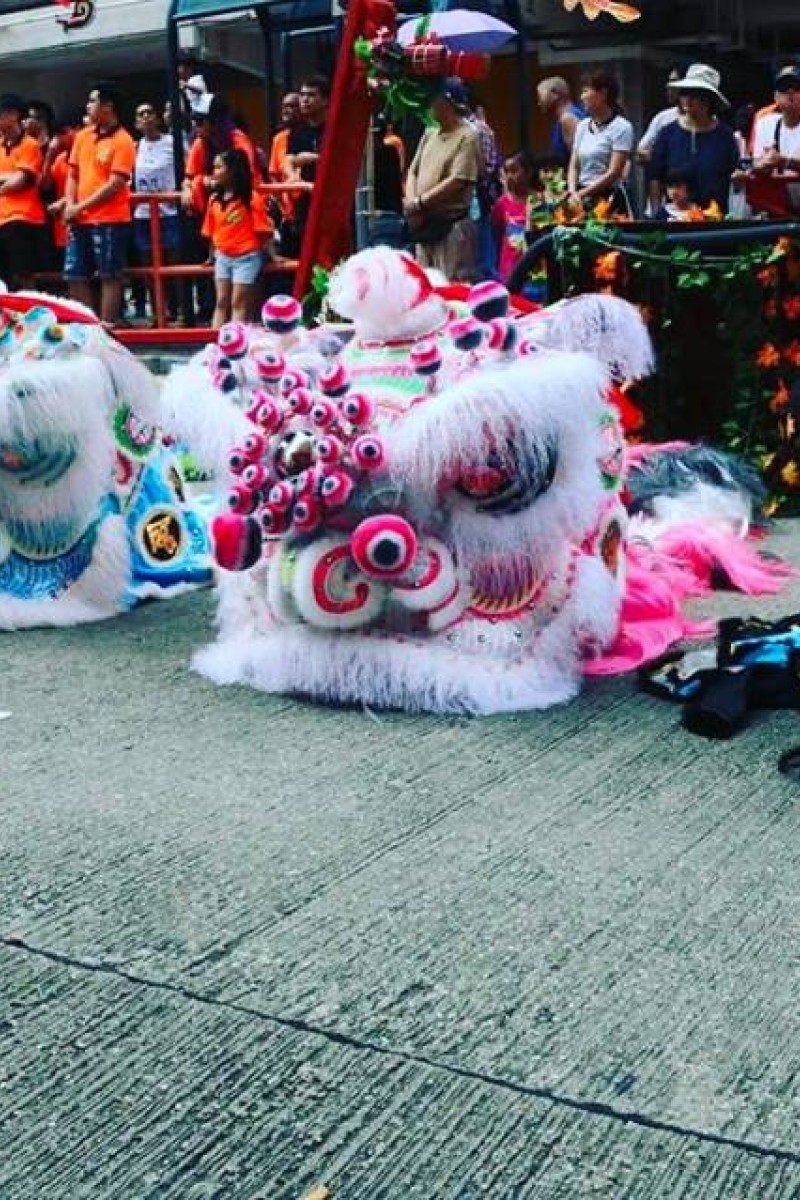YP cadet Ally Chan takes us through the history of lion heads, the art of paper crafting, and how modernisation has complemented the traditional aspects of producing these functional works of art

 Lion heads are now both functional costumes and works of art.
Lion heads are now both functional costumes and works of art.Have you ever heard of the story of Nian? In Chinese mythology, Nian is a monster that goes around during Chinese New Year causing trouble, committing crimes, and robbing villagers. Rumour had it that Nian was scared of the colour red, loud noises and bright lights. Therefore, villagers performed lion dances with bright red lion head costumes to scare Nian away, which is still a popular Chinese New Year’s tradition to this day.
But what goes into making one of these colourful and intricate lion heads? Master Hui Ka-hung of Hung C. Lau, a company that specializes in lion head, says they must be crafted with the traditional Chinese paper crafting method of zhizha.
There are four steps. First, a base must be created with bamboo sticks. A good base is vital for a good lion head, as it determines how durable it will be. Secondly, paper will be stuck onto the base. With the invention of the hot glue gun, the paper can be attached more securely than before. Third, the lion head must be painted with different colors. Lastly, beads and other sorts of ornaments will be added for decoration.
Depending on who made the lion head, there are ways to identify the producer. For example, Hung C. Lau’s lion heads always have a trademark layer of silver sheen. The production of one lion head takes around 10 days.
With modern technological advances, you might wonder if production of lion heads might be mechanised in a factory. So far, attempts to build a base using iron and steel with automated machines have failed as the metals fail to bend in the way bamboo does.
In the past, differently-coloured lion heads had their respective meanings. For example, the color black has a connotation to the famous military officer Zhang Fei, hence a great fighting spirit is presented with a black lion head. Another example is red, which is connected to the righteous warrior Guan Yu and is a symbol of justice.
Nowadays, lion heads have become a form of art, and colours do not matter very much anymore. We commonly see shades of purple, pink, and other sharp colours used in the design of lion heads, which demonstrates the effects of modernisation on traditional practices.
Modernisation not only changed the meaning behind their design, but also the underlying purpose of lion dance performances. In the past, lion dance used to be a way of showcasing a kung fu team’s skill. The lion head colour also demonstrates the team’s characteristic. However, current lion dance has become a kind of exercise; it is officially a competing event in the Asian Indoor Games. In 2014, the heritage museum in Hong Kong even listed lion dance as part of our local intangible cultural heritage.
Hong Kong made lion heads have had a rough history. Though Hong Kong made lion heads were known for their great quality, they were also known for costing an arm and a leg. In the 80s to the 90s, with China experiencing economic reforms, the mainland started to produce cheaper lion heads with efficient division of labour principles, coupled with generally lower wages and material costs. Hence, a mainland lion head cost a few hundred dollars while Hong Kong ones could be tens of thousands of dollars. Luckily, with increased media coverage in recent years, locally made lion heads have regained their popularity and business is gradually getting better.
Modernisation is not like the monster Nian; it does not go around destroying traditions. Tradition is not a burden to creativity, but rather the origin of it. The history and changes in the production of lion heads have proved that modernisation can complement and enhance traditions, as they are ways for people to connect to the past.
Edited by Jamie Lam

